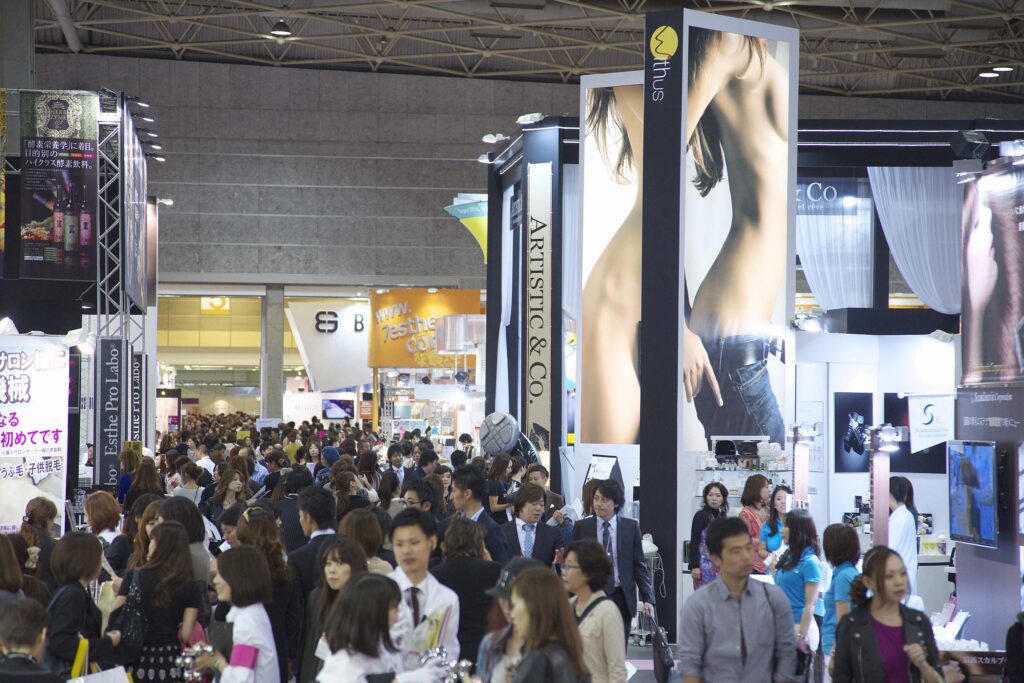Exhibitions have an almost unique ability to present global trends to domestic markets, and in doing so opening doors to the people who live there. But what pieces must a destination have in place to make a successful exhibition industry?
New Orleans jazz is famous around the globe. The New Orleans jazz funeral less so, but for those of you not familiar with perhaps the world’s most colourful rite of passage for the deceased, it turns death into an occasion both earnest and inspirational. It celebrates a life much loved. Lasting up to a week, and in some instances including a parade far removed from the sort of funeral procession the majority of us are ever likely to witness, the event marks a loved one’s journey into the afterlife with heartfelt reverence and praise – as well as tambourines and drums.
A typical funeral begins with a slow march from the deceased’s home, the corpse carried through the street by horse-drawn hearse and accompanied by a brass band playing sombre dirges. In time this changes into a swing beat, as the downcast mood of the mourners gives way to the uninhibited celebration of a life. The New Orleans jazz funeral gained popularity throughout the 20th century and has rightly become a spectacle beyond compare; interestingly, it has lost some of its popularity in the wake of Hurricane Katrina.
Now while it is of course an extreme case, compare this exuberant business with the traditions that surround death in China, where throughout history it has been a taboo subject. Any activity associated with death is believed to bring misfortune, and the matter is given over to hushed whispers and overt solemnity.
In 1993, when Beijing doctor Li Songtang established a palliative care unit hoping to improve the lives of the terminally ill in one of the city’s central districts, his efforts were stymied by implacable protestors who spoke of curses, and claimed his business would be a blight on the neighbourhood.
So given this deeply rooted set of cultural traditions, it may have come as some surprise when the US-based National Funeral Directors Association (NFDA) decided to launch a funeral exhibition in Hong Kong.
The fact remains that death is revered or celebrated in a multitude of ways, and the NFDA sought to achieve one of the most impressive outcomes available to exhibition organisers: creating a new market and in the process generating some sort of cultural shift. One of the organisers commented that elderly attendees were even lining up to ‘try out’ the coffins on display for size and comfort. Against the odds, the show did, in fact, become increasingly successful and it continues to run today.
Of course it doesn’t only happen in the emerging markets. When Brian Wiseman launched the adult entertainment exhibition ‘Erotica ‘ in the UK, he helped to legitimise an industry that until then had existed largely beneath cornershop counters and behind the panelled windows of Soho alleys. His decision to launch such a show flew in the face of the long-standing ‘No sex please, we’re British’ attitude that had in effect repressed the adult entertainment industry in the UK; in doing so Wiseman gave the British public cause to question the way in which the industry was at that point ill-serving a clear and present demand.

One of the primary motivators of the international exhibition organiser is precisely that drive to be first into a marketplace, to establish a supply for a latent or undiscovered demand, and there is no more bountiful a place to do so than in the emerging markets.
The conventional dichotomy between mature and developing, or emerging, markets is not so easily applied to the exhibition industry. The traditional understanding of a mature market is defined as one in which growth and innovation has levelled off, where the return on investment is likely to yield more modest gains. By contrast, early investment and a foothold in an emerging market, where innovation is key and a market presence expands in accordance with the growth of industry, can generate much greater rewards.
However, as anybody familiar with the complicated exhibition industry in India, Russia or many African countries can attest, the development of a market through activity that has proven to be lucrative elsewhere is anything but certain. Sometimes, focusing on innovation or the exploitation of a niche industry in a mature market can be more lucrative than staging a leading construction show in an emerging market.
The exhibition industry is, after all, hostage to the progression of a market through the connection of those who want, and those who have.
In the words of Miladin Šakić, one-time president of the Belgrade Fair: “Every country, in accordance with her possibilities, tries to abandon manual production as early as possible and have it replaced by a mechanical one – in other words to get industrialised at the earliest possible date and reach a higher level of development.”
This, he says, is a necessity in itself and is followed by every developed country cultivating the potential that exists elsewhere in the world. The global exhibition industry is fundamental to the development of industry in developing countries. The right congregation of technology firms and buyers can bring affordable refrigeration to countries in Africa, or help construct sanitation systems in an impoverished city in Latin America.
As Šakić says, this is an incontestable truth, one that imposes itself as a result of the pressing need to industrialise every country. There are many factors that dictate the type of event a market is ready for, such as size, social relations, political infrastructure and international position, but in every developing country there should be a body of actors capable of helping to facilitate exhibitions and all the good they bring. In the opinion of Šakić, such a joint group should include representation from all, or at least the majority, of the following:
- All official bodies of state
- Chambers of commerce and trade
- Professional associations and organisations of all economic branches
- Banks
- Trade unions
- Scientific societies and institutions
- Railways, airlines and transportation companies
- PTT
- Customs
- Show and trade fair event organisations
- Educational and cultural institutions
- All factors of the so-called secondary and tertiary activities
- General public opinion
“The prerequisite for the successful industrialisation of a country or a particular branch, is a coordinated and harmonised action of all these factors as this would provide a rhythmical, undisturbed and smooth progression of the process,” he says.
It is when such representation as Šakić believes is necessary falls short that a country’s industrialisation can slow down; in some cases the process as a whole can even come to a complete stop.
“Several developing countries have endured negative experiences in this respect,” Šakić says. “Through additional efforts, however, the majority of these countries have managed to master and overcome this insufficiency, and through synchronised activity they have been able to begin or continue the actions leading to industrialisation.”
These ‘additional efforts’ Šakić makes reference too, are frequently the actions of the global exhibition organiser. They play a significant role in the process of industrialisation and growth in developing countries.
We can, of course, take it as read that things can be difficult for organisers in emerging markets, but even in mature markets events can conspire and present tough challenges for the smooth operation of an exhibition industry.


Leave a Reply